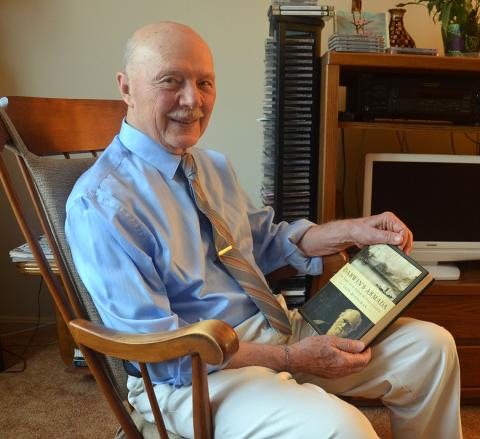Peer Review Legend Remondini Dies at 88

Dr. David Remondini, a legendary scientific review officer at the Center for Scientific Review and the face of fair peer review for 36 years at NIH, died on May 7 at age 88 following surgery necessitated by an automobile accident a few weeks prior.
Dapper, humble and eternally personable, Remondini led CSR’s genetics study section from 1977 to his retirement in 2013. After retirement, he became a volunteer in the Office of NIH History to curate a unique collection of grant reviews gathered from his own tenure and that of his predecessor, Dr. Kay Wilson, dating back to the 1950s and the birth of the field of molecular genetics.
Remondini helped to shape CSR’s approach to fair peer review in his insistence, bordering on the ecclesiastical, to deeply analyze data from one’s study sections to ensure every application was dealt with equitably. He wanted reviewers to understand all aspects of the field beyond their own subspecialty. At the time of his death, he was writing a paper about what he called the “beautiful scientific review process.”
“Dave’s knowledge and experience with NIH peer review was legendary, and he pretty much defined the term ‘institutional memory,’” said Dr. Cheryl Corsaro, a longtime colleague and retired CSR scientific review officer. “In addition, he was a gracious gentleman, known for his generosity of spirit and willingness to share his knowledge with colleagues.”
“If you chatted with him for even a few minutes, you couldn’t help but love working with him,” said Dr. Mohamed Noor, former chair of CSR’s genetic variation and evolution study section and now a professor at Duke University. “He was one of the sweetest, most generous and most thoughtful gentlemen I’ve ever known—always taking the time to listen carefully to people’s concerns or opinions on proposals or process, and having a wealth of historical knowledge and perspective of not just the NIH but also of our fields of study more generally.”

Photo: Michael Lang
Others at CSR described him as sagacious, kind and having a calming effect on whoever met him. “Whenever the pressure grew for completing summary statements against deadlines, I would visit his office to talk to him,” said Dr. Syed Amir, retired CSR scientific review officer. “I came out much less stressed and in an upbeat mood.”
Remondini was born in Deming, N.M., in 1931. A child of the Great Depression, he described his early life on a homestead as instrumental in preparing for a life in science, from the regimen of daily chores to observing his father’s meticulous cattle-breeding records.
After WWII, his family moved to Riverside, Calif., where a high school teacher encouraged him to pursue college. He enrolled in Riverside Community College and graduated from University of California, Santa Barbara, in 1954.
Remondini started his career as a science teacher at rural grade schools, doubling as a school bus driver. But Sputnik soon launched him in a different direction. With a new surge in funding from the National Science Foundation in response to the Soviets’ rocketry advances, Remondini pursued an advanced degree in genetics, training first under George F. Hanks at the University of Utah and using Drosophila to study mitotic drive, and then with Eldon J. Gardner at Utah State University, where he earned his Ph.D. in 1968.
Soon after, he became a faculty member at Gonzaga University in Spokane, Wash., where he taught genetics, evolution, histology and history of biology. He was also the first staff geneticist at Sacred Heart Medical Center in Spokane, where he codiscovered the Osebold-Remondini syndrome, a bone dysplasia disease.
Remondini also taught genetics and biology briefly at Michigan Technological University in Houghton before joining CSR in 1977 as what was then called an executive secretary, now scientific review officer or SRO.
Through this period, Remondini also maintained a parallel military career as a reservist in the California National Guard, the U.S. Army and the U.S. Coast Guard, from which he retired as a commander in 1991. He became a private pilot at age 50. He also volunteered countless hours at St. Patrick’s Catholic Church in Rockville, Md.
Through all his accomplishments and adventures, Remondini was a consummate family man. He is survived by his wife of 67 years, Earnestine, his 6 children, 16 grandchildren and 12 great-grandchildren.
In his memory, his family and Utah State University have established the David Joseph Remondini Scholarship Endowment to support scholarships for students studying genetics in the College of Science each year. See https://www.usu.edu/advancement/drdavidremondini for more information.—Staff, Office of NIH History
